

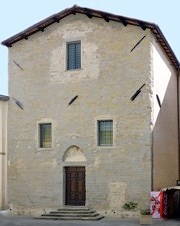
Early History
The origins of this nunnery probably lie with the Monastero di Santa Maria in Trastevere, an ancient nunnery just across the Tiber from Città di Castello.
According to tradition, Pope Celestine II (died 1144) gave a relic of St Andrew to his sister, Angelina, who was a nun here. Cardinal Ugolino (later Pope Gregory IX) seems to have placed the nuns here under the rule for “poor cloistered ladies” in ca. 1220. This was probably the community of “Sancte Marie Castellane” that was exempted from episcopal authority by Pope Alexander IV in 1256.
In 1411, the nuns moved to a site inside the city walls, near Santa Lucia. The relic of St Andrew mentioned above might have passed to the Commune at this point. The Commune commissioned a reliquary for it from Lorenzo Ghiberti in 1414. The relic in its new reliquary was first exposed in San Francesco in 1420. The reliquary was apparently thrown down a well to save it from French troops in 1789. It was in restoration in Florence in 1966, at the time of the flood there, and suffered further damage. t was subsequently transferred to the Pinacoteca Comunale.
In 1460,the nunnery absorbed the nuns from two similar nunneries: Santa Maria de Popula and Santa Maria della Fonte. The community came close to suppression in the early 16th century, but was reformed by four nuns from Santa Maria di Monteluce, Perugia in 1526.
In 1535, the reformed community acquired the ancient church of San Giacomo alla Scatorbia, which was renamed Santa Chiara delle Murate. It has subsequently been modified, but its original features can be seen in Via XI Settembre. The Poor Clares remained here until 2005.
The complex now belongs to the Suore Francescane dell’Immacolata.
Nunnery
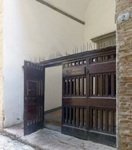
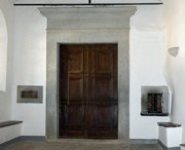
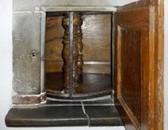
The entrance to the nunnery is to the right of the church, at number 2 Via dei Lanari. The wooden gates open onto a porch over the portal. The opening to the right houses a revolving structure in which abandoned babies were once placed so that the nuns could care for them.
Church
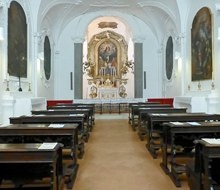
Immaculate Virgin (16th century ?)
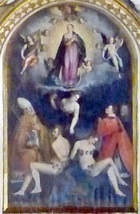
Altarpieces (ca. 1751)
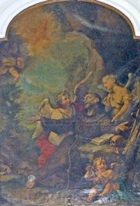

These altarpieces by Ludovico Mazzanti on the side altars depict:
-
✴St Francis receiving the stigmata (on the left wall); and
-
✴SS Anne and Joachim presenting the Virgin at the Temple, with God the Father and a dove representing the Holy Spirit above (on the right wall.
Art from the Complex
Christ and Signs of the Passion (15th century)
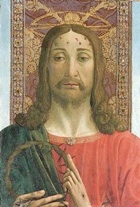
The style of the panel suggests that it was probably painted in Urbino. Christ holds the crown of thorns and other instruments of His torture. The wounds from the crown are visible on His forehead, and the nail wounds can be seen on His hands.
Virgin and Saints (16th century)
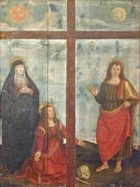
Return to Nunneries of Città di Castello.
Return to Monuments of Città di Castello.
Return to Walk II.

